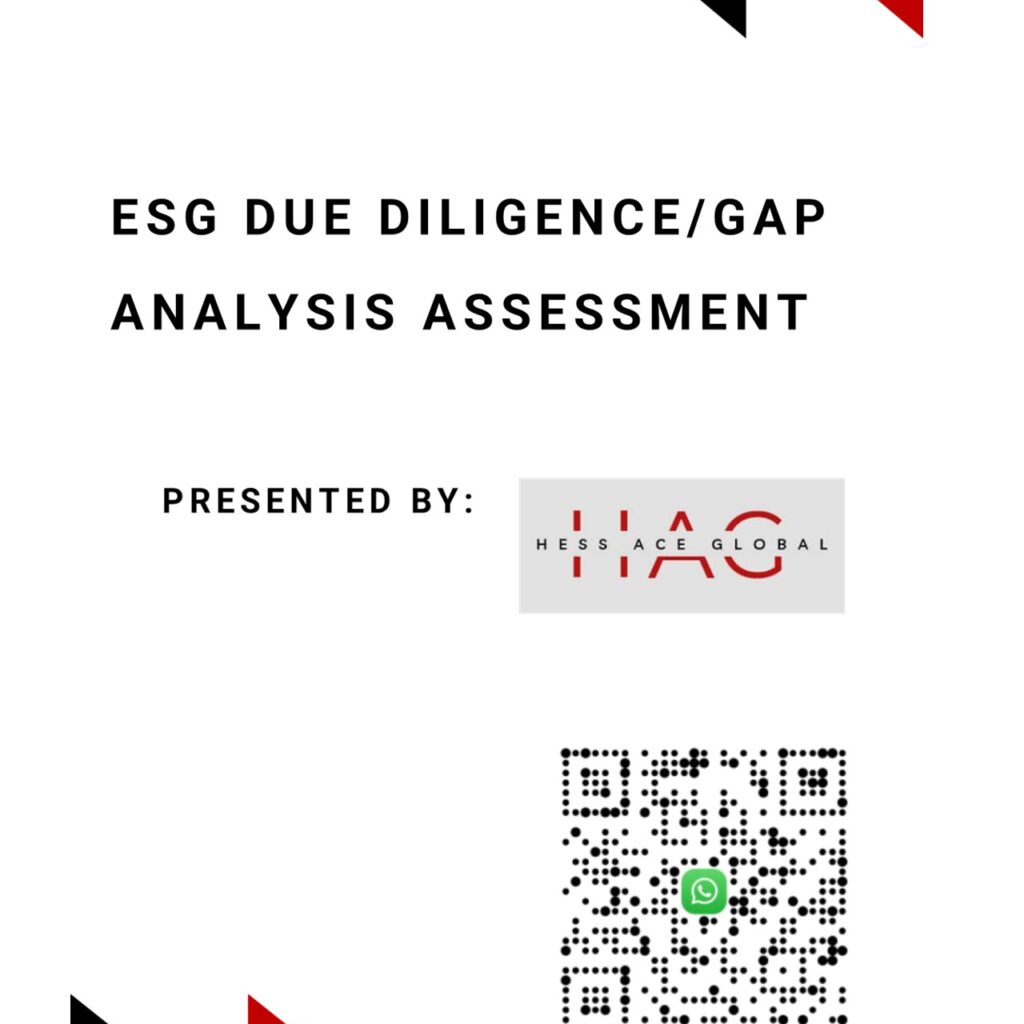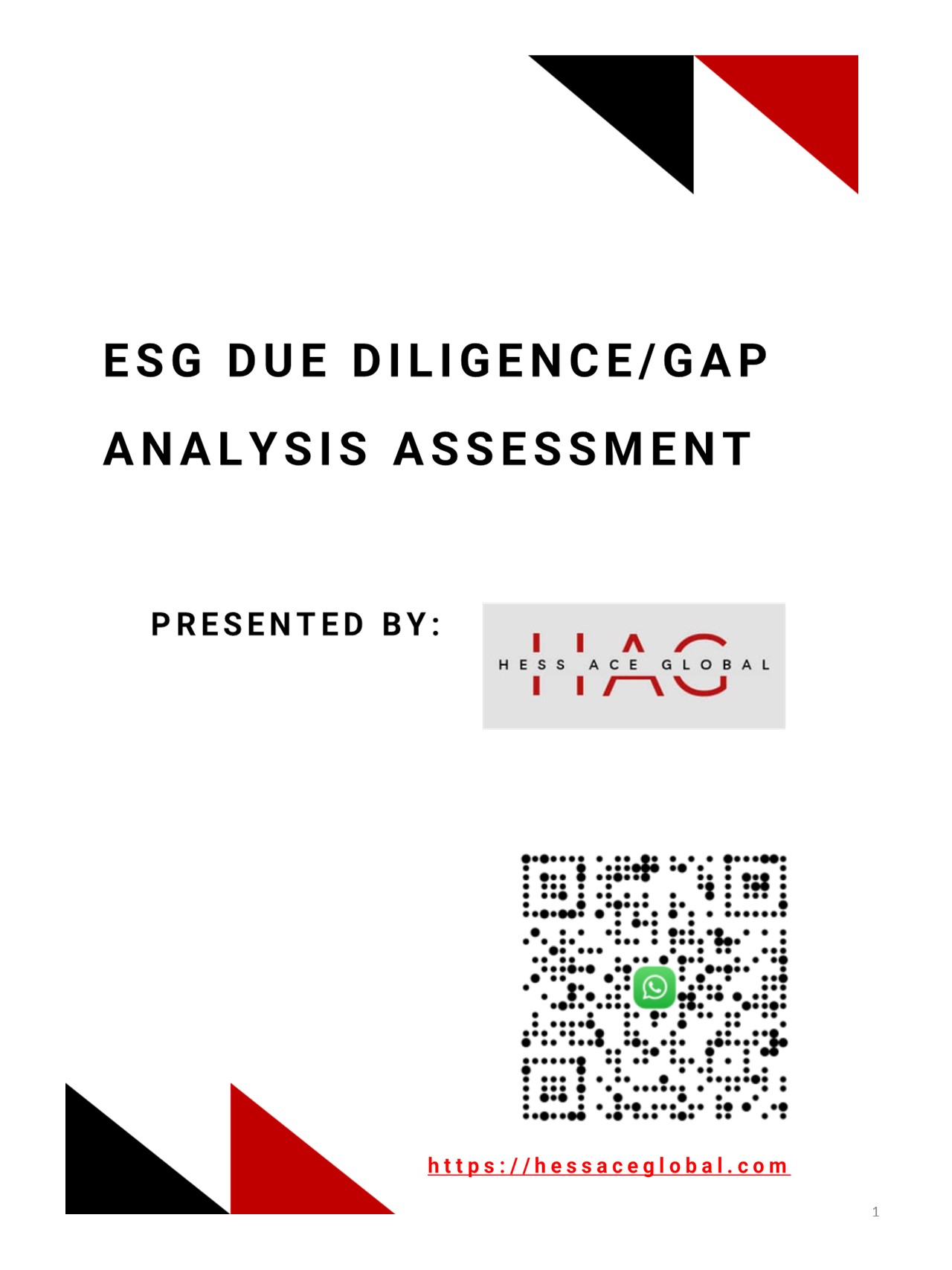
Is it important to do ESG Gap Analysis prior to ESG implementation and improvement?
The answer is yes!
Let’s explore the detail information in my slides and video.
Hello.
I’m Fadzli from HESS ACE GLOBAL.
Today, I will share with you the ESG Gap Analysis Assessment process and the benefits. It is very important for the organization to identify ESG risks, gaps, and improvement areas within the organization. ESG journey begins with the strategy development, followed by the implementation, and ultimately, comprehensive ESG reporting.
This assessment is conducted to evaluate the current ESG performance of an organization, identify compliance gaps, and recommend actionable improvements. The assessment focuses on four key pillars:
- Environmental
- Social,
- Governance, and
- Supplier Management.
The ESG audit typically progresses through two main stages:
- Stage 1:document audit,
- Stage 2: document plus physical site audit.
Organizations are evaluated and rated on their ESG maturity—from initial awareness to full integration and leadership.
The focus areas of Environment Pillar include:
- Energy Management,
- GHG Emissions,
- Water Management,
- Waste Management and
- Material Management.
Each topic will be assessed based on rating indicator’s criteria .”
The focus areas of Social Pillars include:
- Human Rights & Labor Practices,
- Employee Management,
- Diversity, Equality and Inclusion,
- Occupational Safety and Health, and
- Community Engagement.
The focus areas of Governance Pillars include:
- Governance Structure,
- Policy Commitments,
- Risk Management and Reporting,
- Anti-Corruption and
- Customer Commitment.
The rating indicators define how each ESG component is scored. These indicators align with best practices and industry benchmarks to ensure an objective assessment.
The Environmental pillar focuses on how companies manage environmental impacts—energy usage, emissions, water, waste, and resource efficiency. The Social aspect addresses employee well-being, community engagement, labor practices, health and safety, and diversity. Governance evaluates leadership structure, board oversight, anti-corruption practices, transparency, and compliance. Supplier management is also key to ensuring ESG compliance throughout the supply chain. This includes evaluating supplier risks and promoting responsible sourcing.
The final output is the “Overall ESG Levels whether it is start-up, emerging, mature or innovator stages.
We support companies in ESG integration, assessment, and reporting.
For more information and to explore ESG tools and services, feel free to visit our website at https://hessaceglobal.com
Thanks for your time and have a nice day.


No responses yet